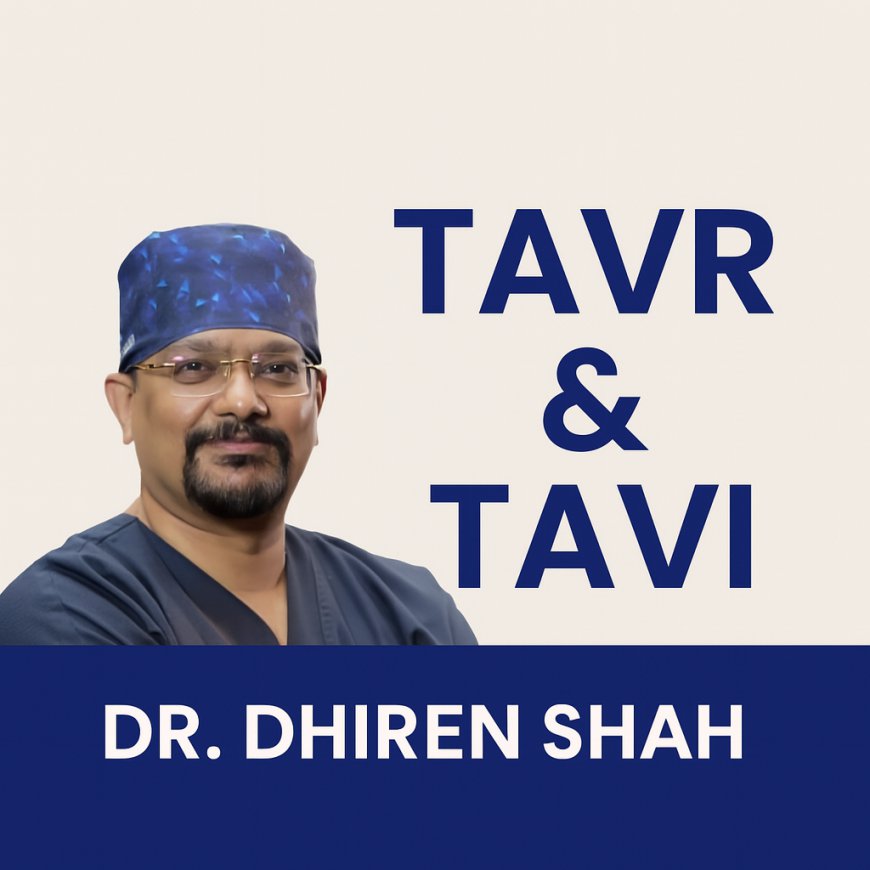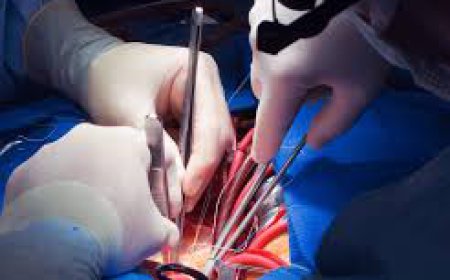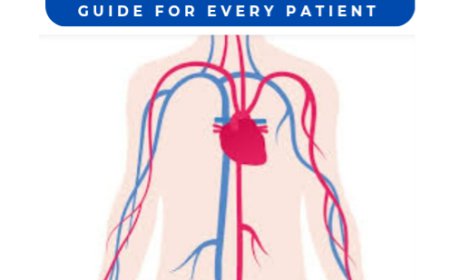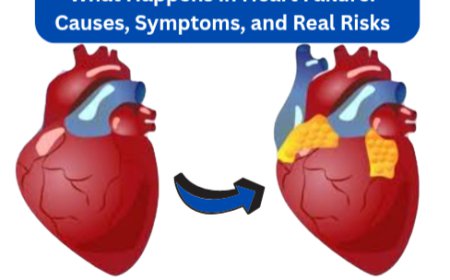Your Heart, A New Valve, A New Life - TAVR & TAVI
Your Heart, A New Valve, A New Life - A Patient’s Guide to TAVR/TAVI By Dr. Dhiren Shah, Senior Cardiac Surgeon – Marengo CIMS Hospital, Ahmedabad

Your Heart, A New Valve, A New Life
A Patient’s Guide to TAVR/TAVI
By Dr. Dhiren Shah, Senior Cardiac Surgeon – Marengo CIMS Hospital, Ahmedabad
Introduction: What Is TAVR/TAVI and Who Is It For?
TAVR (Transcatheter Aortic Valve Replacement) or TAVI (Implantation) is a minimally invasive procedure to treat severe aortic valve stenosis, a condition where the valve that controls blood flow from your heart to the rest of your body becomes narrowed or stiff.
In Simple Words:
If your heart valve is too tight to open properly, your heart has to work extra hard. This can cause:
-
Shortness of breath
-
Chest pain
-
Fainting spells
-
Fatigue
-
Heart failure
TAVR replaces this damaged valve without opening your chest or stopping your heart.
Who Needs TAVR/TAVI?
-
Elderly patients with severe aortic stenosis
-
Patients not fit for open-heart surgery
-
Those with multiple health issues (diabetes, kidney disease, lung problems)
-
Patients who prefer a faster recovery with less pain and risk
Example:
Mr. Mehta, 76, had shortness of breath walking from bed to bathroom. He was scared of surgery due to diabetes and weak lungs. After a thorough heart scan and team discussion, we performed TAVR. He walked the next day and went home in 3 days.
How Do We Decide If TAVR Is Right for You?
We use a Heart Team Approach—a combined evaluation by:
-
A Cardiologist
-
A Cardiac Surgeon (like myself)
-
Imaging Experts
-
Anesthesiologist
You will undergo:
-
Echocardiogram (heart ultrasound)
-
CT Scan (to map your arteries)
-
Angiography (to check heart blood flow)
-
Blood tests and health assessment
Based on these, we decide whether TAVR is safe, necessary, and best for you.
How Is TAVR Performed?
-
You’re given light sedation or anesthesia
-
A small tube is inserted through an artery in your groin or leg
-
The new valve is placed inside your old one using a catheter
-
Once placed, the new valve starts working immediately
-
No large cuts, no stopping the heart, no ventilator in most cases
Example:
Mrs. Joshi, 83, was admitted on Monday, underwent TAVR on Tuesday afternoon, sat up the same evening, and was discharged by Thursday morning.
Benefits of TAVR Compared to Open Surgery
| Benefit | TAVR | Open Surgery |
|---|---|---|
| Recovery Time | 3–5 days | 6–8 weeks |
| Anesthesia | Local / Light | General |
| Chest Cut | No | Yes (sternotomy) |
| Pain | Minimal | Moderate to High |
| ICU Stay | Short | Longer |
| Blood Loss | Very Low | Moderate to High |
TAVR is not for everyone, but it’s a blessing for elderly or high-risk patients.
What Are the Risks of TAVR?
Like any medical procedure, TAVR carries some risks:
-
Bleeding at the catheter site
-
Valve leakage (paravalvular leak)
-
Heart rhythm issues (may need a pacemaker)
-
Stroke (rare but serious)
That’s why the Heart Team evaluation is crucial before we proceed.
Before the Procedure: What You Should Know
-
You’ll be admitted a day before
-
You may be asked to stop blood thinners or adjust diabetes medications
-
You’ll undergo tests like blood work, COVID screening, and anesthesia clearance
-
Fasting may be needed for a few hours
Family counseling is done thoroughly—we explain every step in simple words.
After the Procedure: What to Expect
-
ICU stay for 24 hours (monitoring)
-
Discharge in 2–3 days if stable
-
Minimal pain and rapid mobility
-
Follow-up in 1 week and 1 month
-
Blood thinners or medications may be adjusted
-
Resume normal activities in 7–10 days
Example:
One patient asked, “Will I be able to climb stairs again?”
I said, “Yes, and faster than before.”
He called us 2 weeks later to say he had resumed his daily temple walk.
Life After TAVR
-
Eat a healthy, low-salt, low-oil diet
-
Monitor BP, sugar, and cholesterol
-
Walk regularly
-
Avoid smoking and excessive alcohol
-
Get yearly check-ups and echo
Your new valve can last 10–15 years depending on age and health.
Common Questions
Q: Will I have a scar?
A: Only a small puncture mark on your groin. No chest scar.
Q: Will I feel the new valve inside me?
A: Not at all. You’ll only feel better blood flow and energy.
Q: Can I travel after the procedure?
A: Yes, usually within 2–3 weeks. Always check with your doctor first.
Q: Is it covered by insurance?
A: Many private and government schemes (like Ayushman Bharat) cover TAVR. Our hospital staff can guide you.
Final Words from Dr. Dhiren Shah
TAVR is a life-saving option for the right patient at the right time. It brings together the best of science and surgical skill—with faster recovery, minimal trauma, and maximum benefit.
"In my experience, TAVR gives older patients the chance to live longer—with dignity, independence, and less fear."
If you or your loved one has been advised valve replacement and you’re worried about open-heart surgery, let us help you explore if TAVR is the safer, smarter option.
For Appointments and Evaluation
Dr. Dhiren Shah
Senior Cardiac Surgeon
Marengo CIMS Hospital, Ahmedabad
📞 +91 98255 75933
🌐 www.cims.org
Files
What's Your Reaction?
 Like
0
Like
0
 Dislike
0
Dislike
0
 Love
0
Love
0
 Funny
0
Funny
0
 Angry
0
Angry
0
 Sad
0
Sad
0
 Wow
0
Wow
0
























